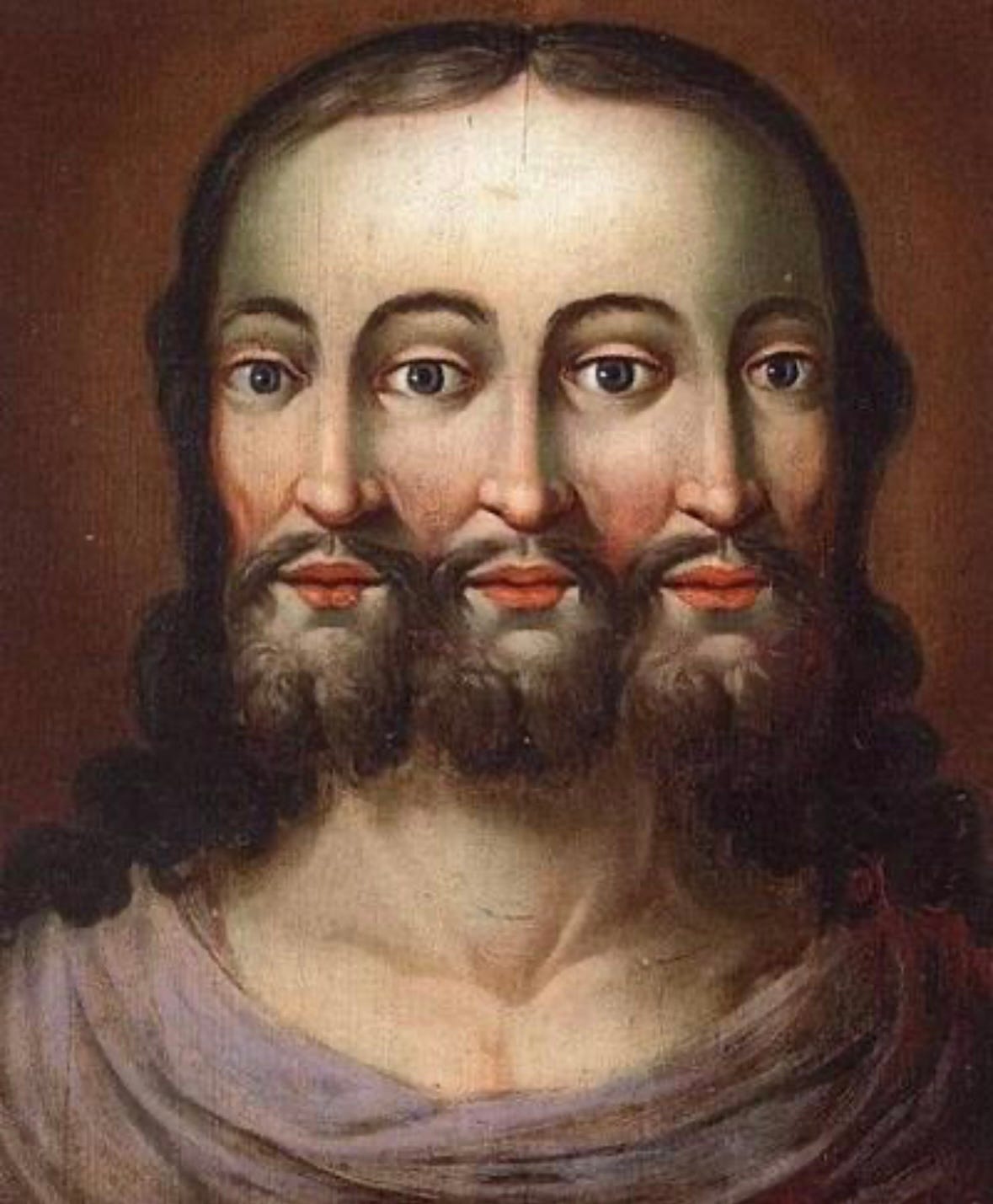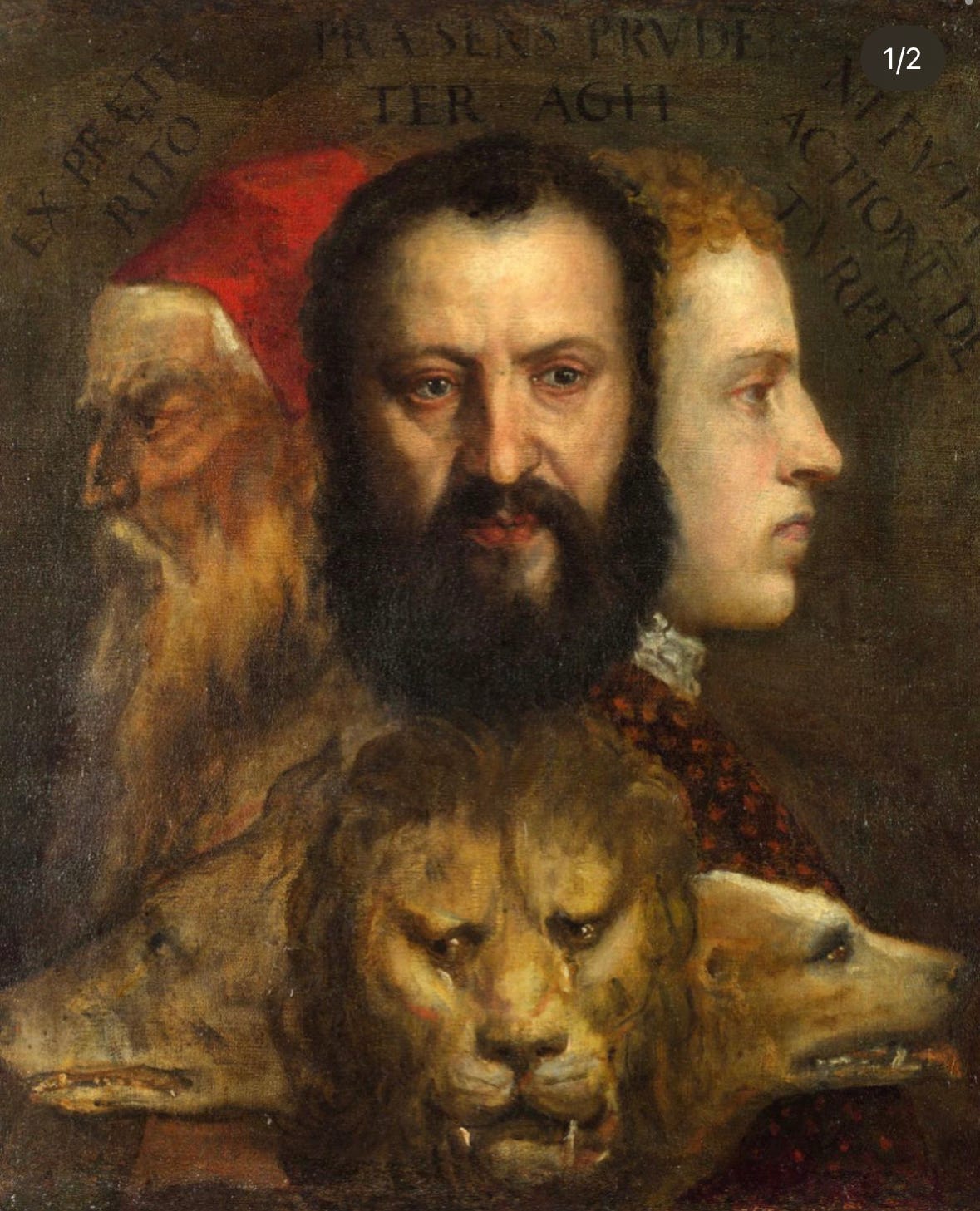This is a rare (undated) image of a three-headed Christ, also known as a tricaphalous.
These paintings of a three-headed Christ were fairly common in the 15th and 16th century, until a papal decree banned them in 1682. Afterwards, many were painted over, with some still being discovered in restorations. Today it is much more common for the trinity to be represented by a dove, rather than a (somewhat monstrous) portrait of a mutant-Christ. But three-headed “Cerberus” portraits were more common in Ancient Greek and some Celtic art. This is why a three-headed Christ was considered “pagan” and came to be replaced with other symbols of the trinity (the father, the son, and the Holy Ghost.)
Recall the portrait by Titian from last week (Allegory of Prudence). See the similarity?
Personally, I find the three-headed depiction of Christ very striking. And when I discovered it recently online (as part of a lecture series on the trinity), I was very intrigued. I hope you’ll enjoy it as well!
Julian
Thanks for reading my newsletter. If you’d like to access bonus features, including a weekly podcast and reading recommendations, please consider becoming a paying subscriber below.





